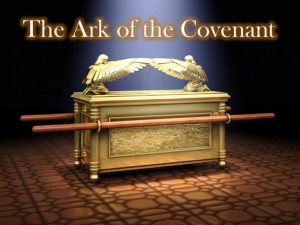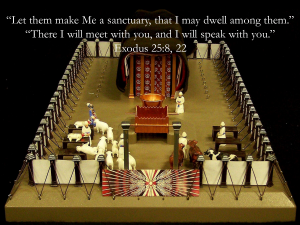I ended my last post noting, “We are called to an ongoing internal encounter with His glory within our spirits that is generally not observed by others, just as the ministry of the high priest before the Ark was not observed. Our mind, will and emotions are called to cooperate in this endeavour. Encountering Him deep within is carrying the Ark and I will delve deeper into the how of this in future posts.”
As Peter said on the day of Pentecost, “This is that.” The outward life and interactions we manifest should be the overflow of what is happening in our spirits. The Ark of the Covenant was carried into battle by Israel at times, and was a tangible reminder of God’s presence with them. However, it was not a magic charm. When it was taken into battle by Eli’s sons Hophni and Phinehas, and the hearts of Israel’s leaders were not right, it was captured by the Philistines (1 Sam. 4:1-17). The Ark was taken from the Tabernacle of Moses at Shiloh. When Yahweh opposed the Philistines because they had the Ark they returned it to Israel. However Israel neglected it.
1 Then the men of Kirjath Jearim came and took the ark of the LORD, and brought it into the house of Abinadab on the hill, and consecrated Eleazar his son to keep the ark of the LORD. 2 So it was that the ark remained in Kirjath Jearim a long time; it was there twenty years. And all the house of Israel lamented after the LORD. 1 Samuel 7:1-2 (NKJV)
The Ark of the Covenant was neglected by the nation and the sacrifices and other activities continued at Shiloh at the Tabernacle of Moses. A picture of how we can operate in religion with some power but lacking the true presence of God as the focus of our worship. The next mention of the Ark is under the reign of Saul.
18 And Saul said to Ahijah, “Bring the ark of God here” (for at that time the ark of God was with the children of Israel). 1 Samuel 14:18 (NKJV)
There is some scholarly debate as to whether this passage actually refers to the Ark of the Covenant or the ephod. Either way, under their current leadership the nation was still treating Yahweh as a good luck charm and tool to be used against their enemies rather than as the focus of their worship.
In a similar manner we can be in the habit of reading our bibles, attending services and signing worship songs, perhaps all well-intentioned, but still have a sense there is something more. That something more is Jesus. Not the Jesus of theories but the one who dwells within. As a habit, almost reflexively, we pray toward heaven. This is a good habit Jesus did it (see Jn. 11:41). Yet at the same time, as Israel neglected the Ark among them we can neglect the life within us.
Have you ever tried to find something you already have? Looked for the glasses you later discovered were on your head on looked for the keys you had in your hand? There is a song with the line, “Looking for love in all the wrong places.” We need to look for Jesus in all the right places. An ongoing theme for Paul was our need to encounter this life within.
4 Now this I say lest anyone should deceive you with persuasive words. 5 For though I am absent in the flesh, yet I am with you in spirit, rejoicing to see your good order and the steadfastness of your faith in Christ. 6 As you have therefore received Christ Jesus the Lord, so walk in Him, 7 rooted and built up in Him and established in the faith, as you have been taught, abounding in it with thanksgiving. Colossians 2:4-7 (NKJV)
To paraphrase the passage above, Paul is saying, ‘You have the right structure and you are faithful but make sure you get to know the one within you.” Paul exhorted us to walk in Him and the context of the writing is Paul refuting wrong teaching and establishing right teaching. He wanted his readers, and by extension us, to know that because we have Jesus in us we need to have our life rooted in Him, not just in right doctrine but a right experiential relationship. While Christianity is rooted in a doctrinal or belief system, our doctrine and belief is to lead to experiences of Him, being ‘rooted and built up in Him.’ In fact in the passage above, even though Paul was not physically present, because of the relationship he had developed with Jesus he described being spiritually present among the Colossians and seeing some of what they were doing (a literal translation of verse 5 from the Greek is ‘rejoicing and seeing’). I have had this happen, having the Holy Spirit show me something in a dream then seeing it played out. Years ago someone, I will call him Bob, described to me how a mutual prophetic friend relayed to Bob what had taken place at a meeting Bob was at. Even though the prophetic fellow was not present it was as if he had been at the meeting.
I am not saying this should be our goal, just that it illustrates what can flow from knowing Him and interacting with the One over the Ark, not just knowing about Him. Let’s get to know the One within.
In my next post I will pick up the natural journey of the Ark of the Covenant, David’s choices in relation to it, and the implications for our spiritual life.

